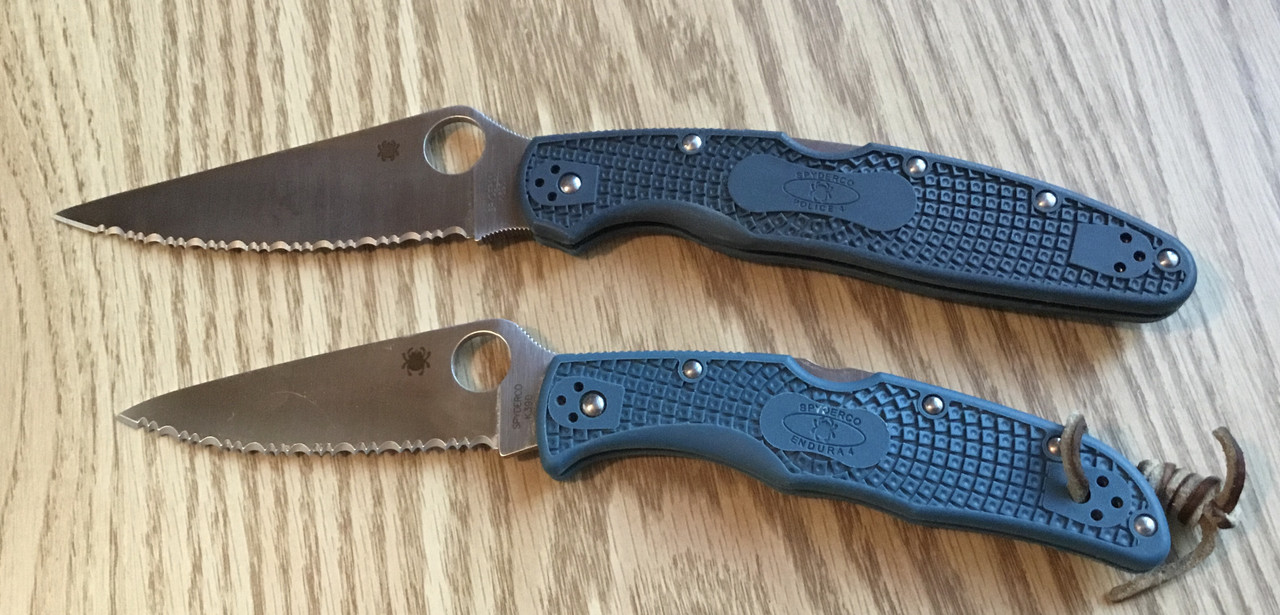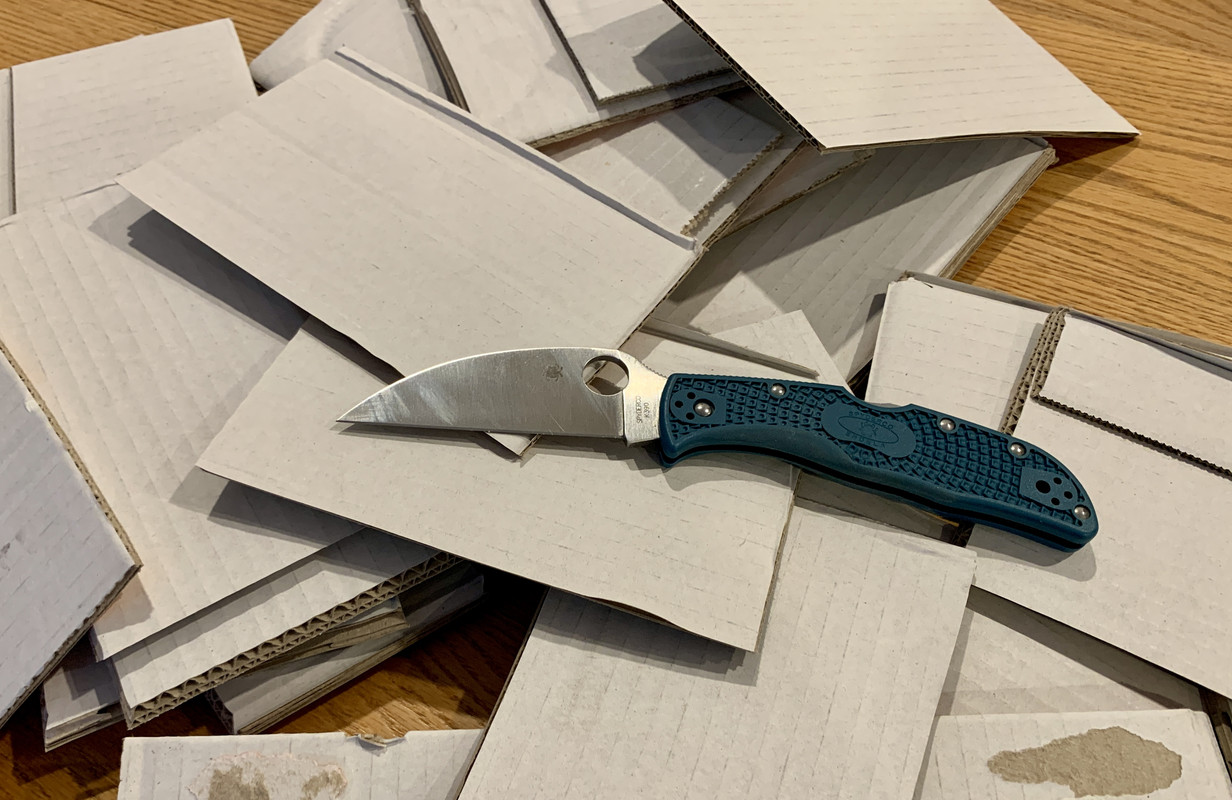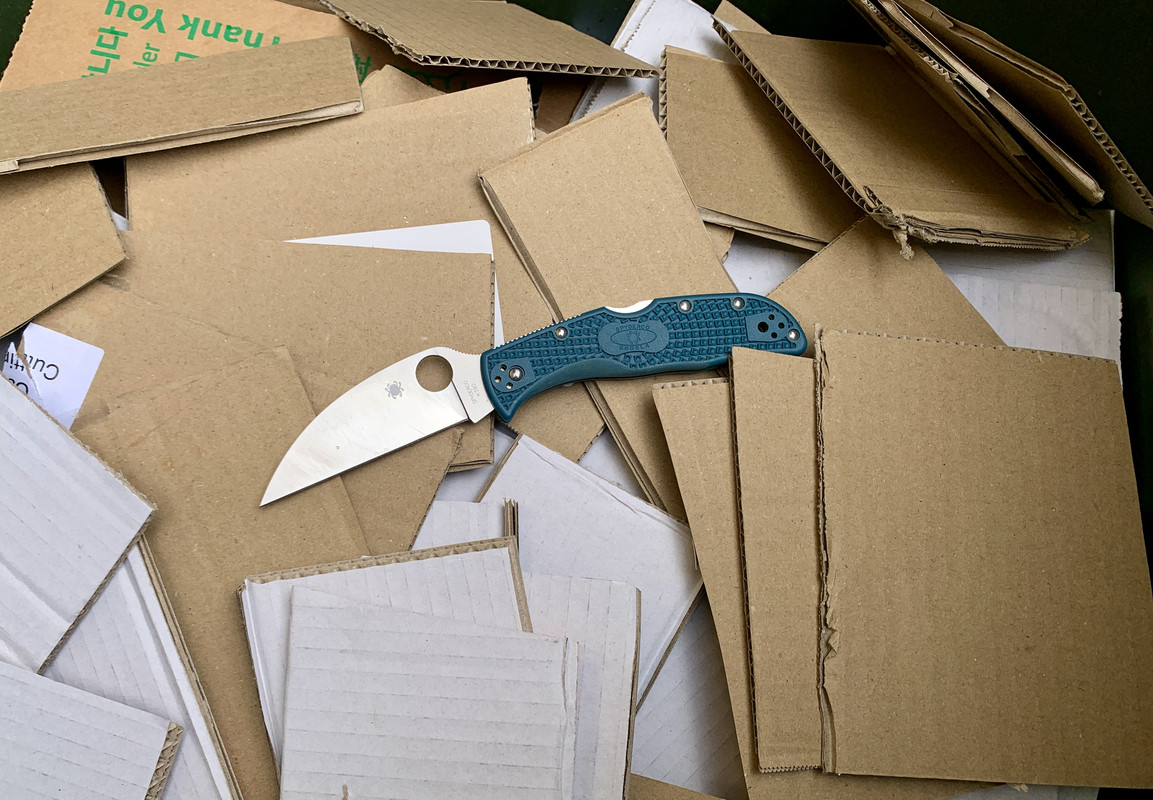Actually I so far have just touched it up on my Sharp-Maker and she’s good to go
I really like K390 - for me easy to keep sharp and any patina that occurs makes it look more interesting. (Although I do try to keep them cleaned, dry and oiled)

.
Early on I had issues with sharpening when I first joined the forum. I remember creating a wire burr edge on several knives I had and thinking wow these are razor sharp. I couldn’t figure out how the edges were dulling so fast when forum users were able to keep a razor sharp edge. The trolls didn’t help me figure it out. But finally someone suggested that I was probably not knocking the burr off. Turns out they were right.LazyOutdoorsman wrote: ↑Mon Aug 04, 2025 9:23 amI will admit, my sharpening technique can be a lot better. Is it possible that a very small, undetectable burr on the k390 will initially pop hairs and whittle, but mush over in a few ten feet of cardboard, creating a very dulled edge? I sometimes have problems with the burr not wanting to come off.The Mastiff wrote: ↑Mon Aug 04, 2025 6:42 amthe thought of K390 being overrated immediately makes me question the OP's sharpening methods and materials.
Also, sorry if this post is delayed as im still on the probationary period for posting.
I live in Washington state also. I do carry my LeafJumper SE K390 daily. The knife usually gets carried in the fifth pocket which is a mesh pocket on the various Prana hiking pants I like to wear. It often gets soaked in sweat multiple times a day as I work in the yard, go for walks or hikes. I use it in the rain and while near or on the Puget Sound. I’ve had no rust issues. I do keep it oiled and wipe it dry often. I’m letting my knife develop a natural patina but that’s slow progress with the type of oil I use.Pacu0420 wrote: ↑Tue Aug 05, 2025 12:00 amOver rated? No way! I wouldn't call it my favorite, but it's still a great steel. IMO it's a lot like Cruwear but less stainless. I live in Washington State, and it got a patina pretty quick. I don't even carry it that much. Now I just keep a coat of oil on the blade and all is good. No rust to speak of. I agree with some of the other posts that it does well with a more course edge. When I went over 1000 grit it lost it's bite and had a hard time starting a cut. I say anywhere between 400 and 800 grit is where K390 does the best.
A few questions, if I may?LazyOutdoorsman wrote: ↑Sat Aug 02, 2025 10:19 pmI've had my leafjumper in k390 for almost 8 months today and I keep experiencing fairly fast edge wear.
I've only been doing freehand edges as I don't have a fixed angle system. However, I think I keep a relatively close angle because I mark where the knife spine sits on my finger. For the stropping, perhaps I should start stropping a lot more than 4-5 times per side. I don't strop too much on either side because I've heard that it reduces the edge aggression or something like that. Although, this "advice" was from reddit, so...JoviAl wrote: ↑Fri Aug 08, 2025 6:25 pm
To the OP - have you tried a fixed angle system to eliminate your sharpening technique from the equation (to a greater extent anyway)? Also you might not be stropping enough - I find I sometimes have to strop up to ~30 (very light) strokes to deburr my K390. I use 1 or 5 micron diamond pastes on K390 as mother’s mag (which I use at work on H1/2) literally doesn’t cut it.
I got this knife before I knew that I should be doing touchups, so there is a lot of resharpening on coarse diamond stones. When I do resharpen, I did not cut off the apex because I don't want the BTE thickening up too rapidly.Brock O Lee wrote: ↑Fri Aug 08, 2025 7:51 pmA few questions, if I may?LazyOutdoorsman wrote: ↑Sat Aug 02, 2025 10:19 pmI've had my leafjumper in k390 for almost 8 months today and I keep experiencing fairly fast edge wear.
- how many complete sharpenings have you done on this knife? I.e, full edge rebuilds, not "touching up", or "stropping back" an existing edge?
- when you resharpen from scratch, do you first "cut off" the old fatigued edge? I.e. slice perpendicularly into a ceramic stone, as if to slice it in half. It would then refect light evenly edge-on, and be uniformly dulled. A great non-fatigued foundation for the new edge.
- how large is the burr you raise between grit progressions? Only visible under light, or large enough to see easily with the naked eye?
- when you're done, is the edge able to slice very thin paper cleanly? Like for instance Rizla cigarette rolling paper, with a slow controlled slice, from heel to tip, without hangups? My test for lingering, tiny, invisible aligned burrs.
I have started oiling my K390 blades for this reason as well (edge degradation via corrosion). I don’t use for food prep so non issue.
I use Frog Lube oil. It works long term and is food safe.
Yes. There are noticeable differences in their rust/patina resistance.
While your heel is 0.020" BTE, if the edge geometry varies along the blade (e.g., thicker near the tip), it could affect cutting performance on denser materials like cardboard. Check the BTE thickness at multiple points with calipers. Strop it.LazyOutdoorsman wrote: ↑Sat Aug 02, 2025 10:19 pmI've had my leafjumper in k390 for almost 8 months today and I keep experiencing fairly fast edge wear.
How I'm pretty certain that the edge is good:
→ I've only sharpened it freehand on either 325/400 to 600/1200 grit on both plated and resin bonded diamond stones at 15 dps. I would do my best at removing the burr by feeling for it and checking the edge with a microscope and light. I would then strop with alternating passes on a 1µm diamond strop on firm leather for about 4-5 times on both sides. This would almost always result in a hair whittling edge.
→ I also ground down a bit of metal over time, surely removing any burnt/fatigued metal. (the heel is currently 0.020" thick)
→ I was using sharpie on my thumb and pointer finger to keep the angle consistent
How bad the performance was:
→ When I first got the knife, I put my own 600 grit edge on it and cut up about 150' of cardboard. The edge afterwards was so worn, it wouldn't even initiate a slice into printer paper, even after cleaning the edge with alcohol and dragging it on wood to remove any debris blocking the edge. It was as if I dragged it across a brick a few times.
→ Another instance is when I cut no more than 60' of cardboard in 1 week. The cutting consisted of mostly thin cardboard food boxes and thin sheet plastic/mailing boxes. By the end of the week, it could not cut printer paper without significantly tearing or creating a super "fluffy" cut.
→ Even if the edge was never used, the aggression would fade over time
* Something that I think should be noted is that I live a few minutes away from the Gulf in Florida. Also, the humidity here can be anywhere between 55-95% in the warmer months.
How I'm pretty sure my expectations aren't too unreasonable:
This is kind of unrelated to the original post, but I recently got a lw manix 2 in 15v a few days ago. I've decided to use the factory edge (which still has a little bit of burr left) and tried cutting up a lot more stuff and being slightly careless such as making contact with glass jars. The edge is still toothy and sharp and cuts printer paper cleanly.
Edit: the geometry of my 15v manix is 0.025" bte at approximately 20°dps
Thanks for reading my ramblings. Does anyone else have a similar experience with k390? Or am I doing something wrong


Thank you. Ima reprofile the next time I can. Also, I think I got better at removing the micro burr, so fingers crossed I can get this knife to cut as long as everyone says k390 can.Brock O Lee wrote: ↑Mon Aug 11, 2025 5:57 pmYes those angles are quite obtuse for cardboard. You’ll see a big improvement in cutting ability, and edge retention when you drop to 15 dps. K390 can handle that.
I still suggest you to cut off the old edge before setting the new bevel.
K390 in my experience with household recycling lasts me 2-3 months before I have to resharpen. My cue to resharpen is when it stops to slice cardboard cleanly.
This is on a relatively refined edge, 15 dps, 1000 grit diamonds, no micro bevel, except to deburr with 1 micron diamond spray (on a firm substrate like basswood).
A coarser edge should last even longer on cardboard, but I like it a bit more refined for hard plastics etc.
You may need a few edges to see the performance stabilise. Check out Outpost76 on YT for context.
